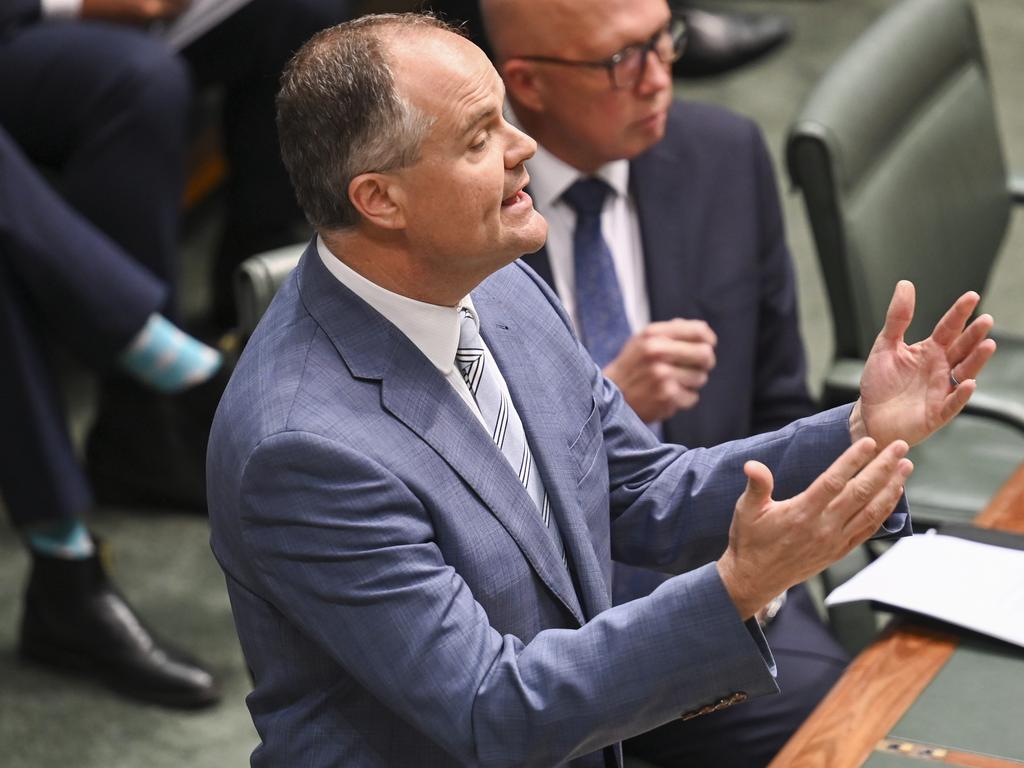Coalition’s nuclear ‘facts’ don’t match global reality

But as the late, great US senator Daniel Patrick Moynihan put it: they are entitled to their own opinions, but they are not entitled to their own facts.
Pro-nuclear “facts” are being asserted with confidence that bear little relationship to reality.
It doesn’t matter how reputable the body that points out nuclear is not an economic answer to Australian energy needs. It doesn’t matter how robust the economic analysis.
The most common of the falsities about nuclear power, uttered daily by Peter Dutton (and repeated last week by Judith Sloan on this page) is that Australia is the only G20 country without nuclear power, or proposing nuclear power.
What about Germany? Its last nuclear power plant was turned off in April last year. Since then, Germany has experienced record renewables output, energy price falls and a material drop in emissions. Chancellor Olaf Scholz said last year: “The issue of nuclear energy in Germany is a dead horse. Anyone who wanted to build new nuclear power plants would need 15 years and would have to spend €15bn-20bn ($16.2bn-$21.6bn) each.”
That doesn’t sound like considering nuclear power to me.
Italy is in the G20. Nuclear power was shut down in Italy after a 1987 referendum. Saudi Arabia and Indonesia are in the G20. Neither has nuclear power. Suggestions of nuclear power in these two countries are distant whispers of possibilities, not concrete plans.
The attempt to discredit the evidence that nuclear power is uneconomic for Australia reached a crescendo with the recent release of the CSIRO/AEMO cost-of-energy report, GenCost.
GenCost has been released each year since 2018. It consistently finds nuclear is the most expensive form of energy. But only in the past two years has this finding become controversial.
Previously, criticism of GenCost claimed integration costs such as transmission, storage and gas were missing – the 2024-25 GenCost highlights these, and still finds nuclear substantially more expensive than renewables. This, of course, did not satisfy those who had to find new grounds for complaint.
Most bizarre has been the opposition spokesman on energy, Ted O’Brien, who said he accepted the high capital costs GenCost confirmed, but disputed that this flows to the cost of energy. He claimed GenCost “is for investors, not consumers”. How exactly are those investors meant to recoup capital costs if not through high energy prices? If O’Brien thinks extremely expensive power plants can produce cheap power, then he really needs to explain how this economic metamorphosis will occur.
In another criticism of the CSIRO, O’Brien inadvertently revealed more than he intended. As part of its research, the CSIRO predicts the amount of time various power generators will be outputting electricity. For nuclear, this could be as little as 53 per cent of the time. Nuclear reactors could technically run 24/7 – but not commercially. They would struggle to recoup the costs of doing so, because existing electricity generation sources have lower marginal costs.
It simply would not be commercial to run all day, every day. And, as opposition Treasury spokesman Angus Taylor keeps telling us, the plan for nuclear has to be commercially viable.
You would think the CSIRO’s finding that nuclear would run as little as 53 per cent of the time would actually appeal to O’Brien, given he’s previously argued that nuclear power is flexible enough to turn on and off as needed, for peaking. But it did not.
O'Brien argued that a much higher capacity factor should be used. This means he doesn’t think nuclear will be used for peaking after all. If he really thinks nuclear power would operate this way, he needs to explain how it would coexist with increasing amounts of renewable power in our grid.
The Coalition’s nuclear plan (that it seems too unsure of to release) isn’t a deviation from the former government’s inaction on securing Australia’s energy future – it’s an extension of it. The Coalition is entitled to its opinion, but it should never be at the expense of facts.
Chris Bowen is Minister for Climate Change and Energy.






Truth is the first casualty in a culture war. And proponents of nuclear energy in Australia are at the frontline of a culture war. The next election will in no small part be a referendum on nuclear power. This is at the choosing of the federal opposition, which has decided to make it the centrepiece of its energy policy.